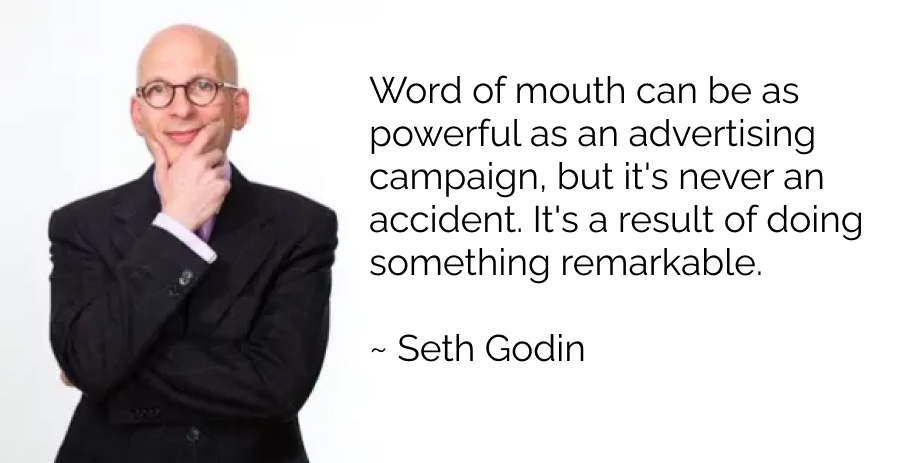You’ve likely heard about content marketing and may have asked yourself, “What is content marketing? Why is content marketing important?”
I’m a fan of content marketing and recommend that our clients use it to build their businesses. In this article, I will draw on my many years of experience to explain why content marketing is important.
Why do I recommend Content marketing?
How will creating high-quality content drive business growth for your business?
Content marketing works efficiently with other marketing strategies, but it can also stand alone, which makes it a cost-effective alternative to traditional marketing. It’s a digital marketing strategy that any six-figure business owner can use to drive growth. It’s not hard, and content marketing costs are reasonable, but equally, it’s also not magic. Like most things, you need to work at it. You need to understand what it is and how it creates value for your customers and our business. You need a content strategy if it’s going to be effective.
Content marketing isn’t just about creating quality content; it also involves optimizing, sharing, curating, and monitoring the performance of quality, consistent content across digital marketing campaigns and media platforms.
But before we jump into the details of why your business can’t afford to ignore it, let’s take a look at what exactly content marketing is and how creating quality content benefits your customers and your bottom line.
What is Content Marketing & Why Is Content Marketing Important?

Content marketing is a strategic marketing approach focused on creating and sharing valuable, relevant, high-quality content designed to attract, engage, and retain a clearly defined audience. Basically, an effective content marketing strategy starts and ends with customers. Content marketing can stand alone or it can complement traditional marketing. Consistently publishing content that appeals to the target audience is an effective way to generate website traffic and attract prospective customers into a marketing funnel.
This content can be in the form of blog posts, videos, social media posts, infographics, email newsletters, and more. It aims to provide helpful information to prospective customers without overtly selling a product or service. By delivering value in this way, businesses can establish themselves as thought leaders in their industry and build trust with their target audience.
Get the right customers for the right reasons – The First Relationship Marketing Principle.

In essence, marketing delivers valuable content that goes beyond functional benefits, resulting in relationship equity. Relationship equity fosters loyalty and long-term relationships.
It is also competitive insulation. Content marketing attracts and retains the right customers for the right reasons. As we’ve often discussed, loyal, best customers bring revenue to your business in five ways.
Definition of Content Marketing

“OK I get it. Content marketing is important. I’ve heard a lot or people talking about it. But what is it?”
A fair question.
Content marketing is a buzzword that’s been tossed around over the years, but it’s not just another marketing buzzphrase. It’s a long-term digital marketing strategy that intentionally and consistently creates and shares valuable, relevant, high-quality content designed to attract, engage, and retain customers.
Content marketing is the art of communicating your value to your customers by giving them value. It’s not just a recommended strategy; it’s an essential one.
How to Develop Your Own Content Marketing Strategy
Now that we’ve covered the basics, what it is, and why it’s important, let’s explore how you can create a content marketing strategy that creates value for your customers and drives results for your business.
As I mentioned earlier, effective content marketing starts and ends with your customers. You need to understand their needs, pain points, and the type of content they’re looking for at each stage of the buyer’s journey.
To do this, create customer avatars for each key subsegment. These detailed profiles of your ideal customers include information about their demographics, characteristics (attitudes), challenges (pain), and what they gain from your products and services.
By clearly identifying your key target audiences, you can create content that resonates with them and addresses their specific needs.
The avatar is only half the job. It’s equally important to map the buyer’s journey. A journey map is as important as the avatar and is often the missing piece. To create a journey map, describe what’s in your customers’ minds and the questions they ask at each stage of the marketing funnel:
- No interest
- Awareness – something happened that stimulated their interest
- Consideration – exploring and researching their options
- Prospecting – selecting a final solution
- The decision
The journey map plus the avatar helps you determine both the message and the style that’s appropriate at each stage of the buyer’s journey. For example, different headline styles, like a list headline, work better for top-of-funnel interest versus, say, a benefit headline, which will be effective in the decision stage.

Next, conduct keyword research to identify the topics and phrases your target audience is searching for online. Use tools like the Google Keyword Planner or Keywords Everywhere to find relevant keywords with high search volume and low competition. These keywords will inform your content creation process and help you optimize your content for search.
For more details on optimizing content for SEO, read our article, How to Write Blog Content That Ranks.
Once you have a solid understanding of your audience and the keywords you want to target, it’s time to create a content calendar. This plan outlines the type of content you’ll create, when you’ll publish it, and on which channels you’ll distribute it. A content calendar helps you stay organized and ensures that you’re consistently delivering valuable content to your audience.
Finally, remember to measure the success of your content marketing efforts. Use analytics tools to track metrics like website traffic, engagement rates, and conversions. UTM tracking is easy to use and effective for separating traffic into distinct segments. By regularly reviewing your performance and making data-driven decisions, you can continually improve your content marketing strategy and achieve better results over time.
Types of Content Marketing
Three types of content marketing exist – Owned Media, Earned Media, and Paid Media.
- Owned Media is content that you create and distribute, such as blog posts, social media content, email marketing, and website content. It’s a way to generate cost-effective website traffic efficiently.
- Earned Media is content you don’t pay for but gain through shares, reviews, and word-of-mouth. It’s a key benefit of organic social media.
- Lastly, Paid Media is content that you pay for, such as ads on search engines, display ads, social platform ads, or sponsored content.
These content marketing channels can be used individually or in combination to deliver content that builds a positive brand reputation and generates website visitors, leads, and conversions.
Let’s dig into each of them in more detail.
Owned Media
Owned media refers to the channels and assets that a business or brand owns or controls. This can include things like a company’s website, blog, email list, social profiles, and other digital assets. Unlike earned media, owned media is entirely under a business’s control, which makes it an essential part of any content marketing strategy.
Here are the three to four most commonly owned media channels:
Website
A business’s website is the hub of its online presence. It can showcase a company’s products or services, provide information to customers, and generate leads. The website’s content should be designed to support the buyer’s journey. Optimized website content, especially blog content, is ranked highly by search engines, resulting in highly qualified organic traffic.
Blogging
Blog posts are owned media that businesses can use to attract traffic via SEO and establish thought leadership. By creating high-quality, informative blog content on a regular basis, businesses attract visitors to their websites and drive profitable customer action. Blogging is the most effective way to attract a clearly defined audience.
Email Marketing

Email marketing is another cost-effective owned media channel that allows businesses to reach their current customers directly. Email service providers like MailChimp have marketing automation tools that content marketers can use to send targeted high-value messages that keep their customers informed about new products or services, promotions, and other updates that encourage repeat sales. Email marketing is a vital tool for customer retention. Create value by giving value.
Social Media Marketing

While social media can also be an earned media channel, businesses can use it as part of their owned media strategy. When social media is developed using a defined content strategy, it helps build awareness and establish subject matter expertise. This will attract new customers and reinforce brand value with existing customers.
Valuable content posted on Social Media platforms is more likely to be shared, which is why it’s also Earned Media. For more on Social Media, read our post: 7 Reasons Why Social Media Is a Powerful Digital Marketing Channel for Small Businesses.
Video Content

In today’s digital age, video content, especially how-to videos, is quickly becoming a must-have for businesses looking to connect with their audiences. And the best part? You don’t need to be a professional videographer to create custom content with videos. Authenticity is key. With some basic equipment and know-how, plus something to say that your customers will value, creating video content is easy and will resonate with viewers.
Podcasts

Podcasts have skyrocketed in popularity over the past few years. Podcasts provide an entertaining and convenient source of information for listeners worldwide. Not only do they give listeners the opportunity to dive deeper into topics they may be interested in, but they also allow individuals to hear from experts and influencers in various industries.
Having your own podcast gives you control over the content, and podcast content can be repurposed in many ways. For example, a podcast can be transcribed and edited as a blog post, or it can become video content.
Owned Media Summary
The benefits of Content Marketing are manifest in Owned Media, which is critical for any content marketing strategy. By providing high-quality content and valuable knowledge using owned media channels, businesses can build their brand, generate leads for the sales team, and establish themselves as thought leaders in their industry.
Earned Media
Earned media is a type of media exposure earned through organic means rather than paid for. It is a highly valuable channel for content marketing, as it can help businesses and brands to build credibility and trust with their best prospects. Businesses can leverage several earned media channels to get their message in front of potential customers.
Here are the common earned media channels:
Public relations (PR)
PR is one of the most popular earned media channels used by businesses. This involves contacting media outlets, such as newspapers, magazines, and blogs, to pitch stories or secure coverage. When a media outlet publishes a story about a business or its products or services, it can generate significant exposure and credibility for the brand.
Social media
Social platforms are another common earned media channel. Businesses can generate organic exposure and reach new audiences by creating engaging content that goes viral and building a strong following. Social influencers can also be leveraged to reach niche audiences.
Word-of-mouth

Word-of-mouth marketing is a powerful earned media channel that relies on people sharing their positive experiences with others. This can happen through customer reviews, testimonials, or simply through friends and family recommending a product or service to someone else.
Podcasting
We covered podcasting above in Owned Media, but it’s also a valid form of earned media. Being an expert guest on podcasts lets a business establish its credentials by providing valuable knowledge, and it supports search engine marketing by providing valuable inbound links to the business’s website. Being a guest on a podcast can also attract prospects to the top of your marketing funnel.
Other People’s Lists or OPL
Participating in summits or joint ventures with other marketers gets you in front of their list of customers and followers without paying for access. This broadens your reach and gives you the opportunity to share your high-value content with a new target audience. When this audience engages with you and asks for your lead magnet, they are added to your list and become part of your Owned Media audience.
Earned Media Summary
Earned media channels are essential to any content marketing strategy. By leveraging these channels, businesses build credibility, increase brand loyalty, broaden their reach, and boost sales. Earned Media generates valuable exposure for your business.
Paid Media
Paid media refers to the channels and platforms businesses pay to use for advertising. This includes various forms of digital advertising, such as pay-per-click (PPC), display ads, social media advertising, paid search ads, and more. While paid media can be expensive, it can also be highly effective in generating business traffic and new leads.
Here are four common paid media channels:
Search engine marketing
Paid search ads on search engines like Google or Bing are among the most common forms of paid media. By bidding on keywords relevant to their products or services, businesses can display ads to users who are searching for those keywords. This can be highly effective in generating high-quality traffic and new leads for businesses.
Social media advertising

Social platforms like Facebook, Instagram, Twitter, and LinkedIn are commonly considered owned media, but they are limited in their reach. Fortunately, they also offer highly targeted advertising options that can be used to reach specific demographics or interests. Businesses can create ads in users’ feeds or on the sidebar and set targeting options based on factors like age, location, interests, and more. Social Media ads can be used to broaden your reach and bring in a new audience.
Display advertising
Display advertising involves placing banner ads or other types of visual ads on websites or within apps. This can be an effective way to reach a large audience and generate brand awareness. Retargeting is a specific form of display advertising that targets users who have visited a business’s website or interacted with their ads.
Influencer marketing
While also an earned media channel, influencer marketing can also be paid. Businesses can sponsor influencers’ content and leverage their large followings to reach new audiences. Think of paid influence marketing as OPL on steroids. Influencer marketing will also support the brand through the halo effect generated by the influencer.
Paid Media Summary
Overall, paid media channels can be highly effective in generating traffic, new leads, and brand awareness for your business. Paid media amplifies the impact of owned and earned media, and traditional marketing. Paid media is more efficient when it’s part of a content marketing strategy that includes earned and owned media. Paid Media’s primary benefit is its ability to reach new audiences and amplify the impact of content marketing.
The Importance of Content Marketing
Content marketing is effective because it provides a win-win solution for the business and the customer. By delivering valuable information or entertainment through content, businesses can establish trust and credibility with their audience and increase brand awareness, loyalty, and sales.
Give value to create value.
How to Get Started with Content Marketing
Figuring out how to get started can be overwhelming, but with the right approach, it can be a rewarding experience. We’ll walk you through the steps and provide the valuable resources and tools you’ll need for success.
We covered this above, but remember, success begins and ends with your customers. it is essential to identify your prospective customers and create content that appeals to them where they are in their journey.
Next, establish goals and develop a plan to achieve them. The key to this is selecting the media channels that will most efficiently deliver your content to your target audience. The most common mistake content marketers make is trying to boil the ocean. Don’t do it. Water the flowers and prune the weeds.
Consistency is also key in content marketing, so prioritize producing quality content regularly.
It’s also crucial to measure the success of your efforts and adjust accordingly.
With dedication and effort, consistent content marketing will help grow your business and establish your brand as a reliable source of information for your audience.
Now let’s dig into the details.
First, Have a Plan

A plan is essential for success in any endeavor, whether personal goals or business strategies. Going blindly without a clear direction is like driving without a destination. As the Queen said to Alice,
“If you don’t know where you are going, any road will do.”
As mentioned above, a solid plan is like having a roadmap. A plan can help you identify potential obstacles, create a timeline, and allocate resources efficiently.
It’s important to remember that plans don’t always go as intended. Adaptability is key. However, having a well-thought-out plan will give you the confidence to tackle any challenge that comes your way.
Identify Your Ideal Customer and Map Their Journey

As a business owner, identifying your ideal customer is crucial. But it’s not just about knowing demographics like age, gender, and location. While you need to know these things, truly understanding your ideal customer means diving deeper into their pain points, values, and motivations. What drives them to purchase your product or service? What problems are they looking to solve? You need to map and support the buyer’s journey.
When you understand their questions, what they are, and when they have them, you can tailor your marketing strategies and product offerings to meet their specific needs where they are in their journey. Not only will this help you attract more of your ideal customers, but it will also help you forge stronger connections (trust) and loyalty with them. So take the time to really get to know your ideal customer – make your content marketing important to them – it will pay off in the long run.
Define Your Goals

When defining your goals, it’s important to take the time to really reflect on what you want to achieve. Your short-term or long-term goals should always be specific, measurable, and realistic. Creating a roadmap for success becomes easier when you have a clear idea of what you want to accomplish. Remember what the Queen said to Alice.
However, it’s important to remember that goals are not set in stone—they can evolve and change over time as you learn more about yourself and your priorities. Your plan wasn’t carved into stone tablets. Don’t be afraid to adjust your goals as needed, but always keep working towards improving.
Perspective is also important. Having goals is fine, you should have them, but equally, your customers have goals. For content marketing to be effective, you must also understand and acknowledge the customer’s perspective.
For example, a common mistake is setting a conversion goal for your website when, in reality, your website’s primary goal should be confirmation. Content marketing draws interested visitors looking for solutions to their problems to your website. They are looking for confirmation that your offer solves their problems first. Conversion follows confirmation.
Research Keywords

Keyword research is a foundational element of your content marketing strategy. The keywords customers use to search for information are your best clue into their perspective.
Keep an open mind about grammar, variations, and synonyms. You want to find the words or phrases your prospects use to find information.
But it’s not just the words. Understanding search intent is key. If the intent is information, then create a blog post. If the intent is transactional, then create a service page.
Use keywords and search intent together to fine-tune your content marketing.
Craft Engaging Content That Connects With Your Audience Where They Are

Crafting content that resonates with your followers is essential to your content marketing. To create compelling content, you need to understand your audience. What are their interests, needs, and pain points? Use this knowledge to create valuable content that speaks directly to them. Keyword research is useful here.
Use the content marketing strategies and channels that your audience likes and appreciates. You may dislike Facebook, but if this is where your customers like to hang out, then you should be creating content there. This could be storytelling, humor, and visuals to capture attention and keep your audience engaged.
Above all, engaging content is authentic, and authentic content is engaging. With the right approach, you can craft content that connects with your audience where they are.
Content Marketing Missteps to Avoid
The only constant in the digital world is change so it’s important to stay on top of the latest strategies and trends. However, just as important is being aware of what to avoid.
For example, using clickbait headlines or misleading content may initially attract visitors but will damage your credibility in the long run.
Another common mistake is not clearly understanding your target audience and their needs, which can result in irrelevant content that’s ignored. Content that solve your customer’s problems is content that beings value. Feature-laden content that expects customers to determine how they will benefit doesn’t.
Here are a few more areas to watch out for:
- Overselling or excessive self-promotion: While it’s important to promote your products or services, excessive self-promotion will repell your audience. Leave the plaid jacket at home.
- Neglecting SEO best practices: Keyword research tells you what your audience is looking for, but don’t stuff your content with keywords. Includes relevant keywords naturally throughout your content.
- Inconsistent branding and messaging: Inconsistency in your brand voice, visual elements, fonts, colors, or messaging across different pieces of content will confuse your audience and weaken the impact of your efforts.
- Failing to adapt to changes in algorithms and user behavior: Content marketing isn’t ‘set it and forget it.’ Regularly review and adapt your strategies based on changes in search engine algorithms, social media platforms, and especially user engagement.
- Overlooking the importance of content distribution and promotion: Creating great content is only half the battle. Be sure you also have a comprehensive distribution strategy that includes email marketing, social media, and outreach to relevant websites or influencers. It’s like your website. Building it is the easy part. Getting people to it? That’s the hard part. Have a plan.
- Focusing on quantity over quality: Consistently publishing low-quality or irrelevant content wastes time and treasure. Prioritize creating high-quality, valuable content that resonates with your target audience. If the quality is high, then less is more.
- Ignoring data and analytics: Failing to track and analyze the performance of your content marketing efforts is another way you can waste time and treasure. Campaign testing lets you optimize your efforts with data-driven decisions.
Content marketing will positively impact your audience and your business if you steer clear of these common missteps.
10 Content Marketing Resources
These tools and resources can be used to create optimized content:
- Content Marketing Institute (CMI): CMI is a leading platform that provides valuable insights, guides, and resources on content marketing. Their website (contentmarketinginstitute.com) offers a wide range of articles, research reports, webinars, and training programs.
- HubSpot Academy: HubSpot Academy offers a variety of free online courses on content marketing, inbound marketing, SEO, and more. Their courses are comprehensive and provide practical knowledge and certifications.
- Google Search Console: Google Search Console is a free web service offered by Google that provides data on how your website content is performing in Google search results. It shows metrics such as the number of clicks, impressions, average position, and click-through rate (CTR) for ranked keywords and your website’s pages. This data helps you understand which keywords are driving traffic.
- Moz: Moz is a well-known SEO (search engine optimization) authority. Their website (moz.com) offers a wealth of resources, including educational guides, blog posts, and tools that can help you optimize your content for search engines.
- Keywords Everywhere: Keywords Everywhere is a browser extension that seamlessly integrates with popular search engines like Google, YouTube, Bing, and more. It directly provides keyword volume, competition, and related keywords on the search engine results page (SERP). This lets content marketers quickly identify high-potential keywords and their search volume trends.
- Neil Patel: Neil Patel is a renowned digital marketer and entrepreneur who shares valuable insights on content marketing through his website (neilpatel.com). His blog posts, videos, and podcasts cover a wide range of topics and provide actionable tips.
- Copyblogger: Copyblogger is a popular resource for content marketing, copywriting, and online marketing strategies. Their website (copyblogger.com) offers articles, tutorials, and ebooks on various aspects of content creation and marketing.
- Social Media Examiner: Social Media Examiner is a leading platform for social media marketing resources. Their website (socialmediaexaminer.com) features articles, podcasts, and webinars on content marketing strategies specifically tailored for social media platforms.
- Content Marketing World: Content Marketing World is an annual conference and exhibition dedicated to content marketing. The event brings together industry experts and thought leaders to share their insights, trends, and best practices. You can find recorded sessions and resources on their website (contentmarketingworld.com).
- Books on Content Marketing: There are numerous books available on content marketing that can provide in-depth knowledge and practical insights. Some highly recommended titles include “Epic Content Marketing” by Joe Pulizzi, “Content Inc.” by Joe Pulizzi, “They Ask You Answer” by Marcus Sheridan, and the new and improved “Everybody Writes” by Ann Handley. There’s even my book, Journey to Success: Digital Marketing for Small Business Owners.
Remember, the field of content marketing is constantly evolving, so it’s important to stay updated with the latest trends and strategies. These tools and resources will serve as a solid foundation and help you find relevant content that internet users are searching for.
Final Thoughts on Why Content Marketing is Important
Is content marketing important?
Yes, content marketing is important.
It’s undoubtedly one of the most effective digital marketing strategies available today.
It creates value by consistently distributing relevant content to your best prospects. Relevant content is valuable content.
As this article describes, content marketing has numerous benefits, including increased brand awareness and engagement, improved search engine rankings, improved customer retention, and more.
When done correctly, content marketing is a powerful, cost-effective way to grow your business.
But…
You need a plan, starting with understanding your ideal customer, who they are, and the journey they’re on so you can tailor your content to their needs.
Find the keywords your audience is using. When you understand what your target audience is looking for and, therefore, what they value, you can craft content that supports your audience, and your content marketing efforts will succeed.
Use all three forms of content marketing, Owned Media, Earned Media, and Paid Media, to maximize the impact of your efforts.
Have a plan for distribution. Making the content is the easy part. Getting the content in front of your prospects, now that’s hard.
Measure what you are doing. Use analytics to find and optimize what’s working to improve your content campaigns.
Your investment in content marketing will bring value to your business when it creates value for your customers.
B2B Content Marketing—Boost Your Impact with 5 Proven Copywriting Frameworks
Five copywriting frameworks to boost your B2B content marketing.
Better Marketing Headlines: Why Benefits Perform
Unlock the power of benefit-oriented headlines to captivate readers and improve your SEO.
Mastering Content Writing: Creating Content That Ranks with Keywords Everywhere
Supercharge your content writing with Keywords Everywhere’s ChatGPT widget templates.
Author: James Hipkin
Since 2010, James Hipkin has built his clients’ businesses with digital marketing. Today, James is passionate about websites and helping the rest of us understand online marketing. His customers value his jargon-free, common-sense approach. “James explains the ins and outs of digital marketing in ways that make sense.”
Use this link to book a meeting time with James.


